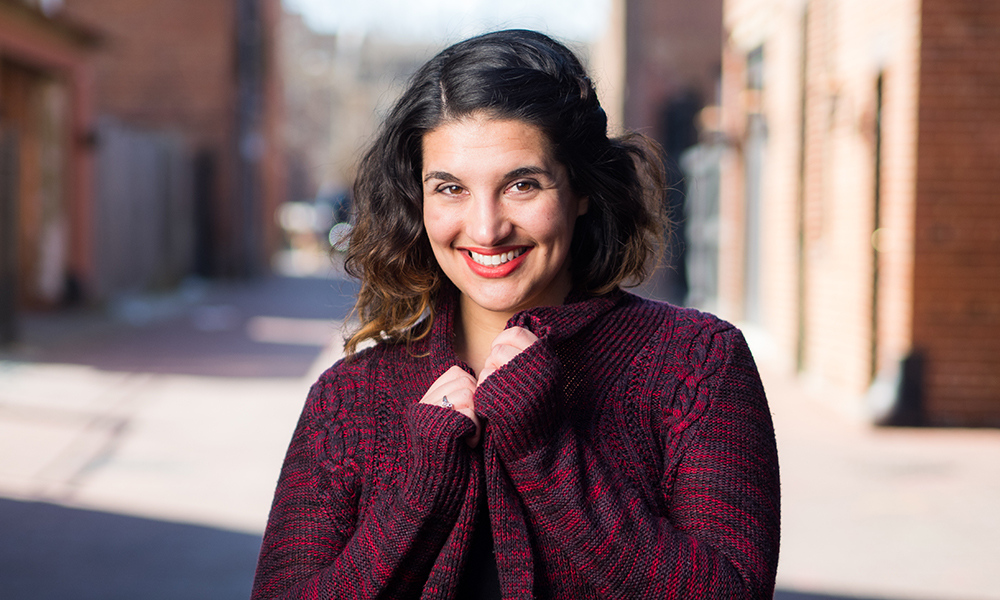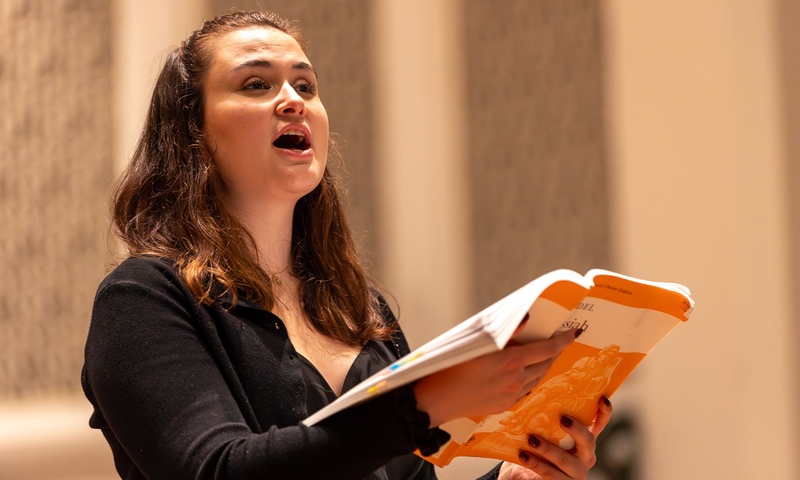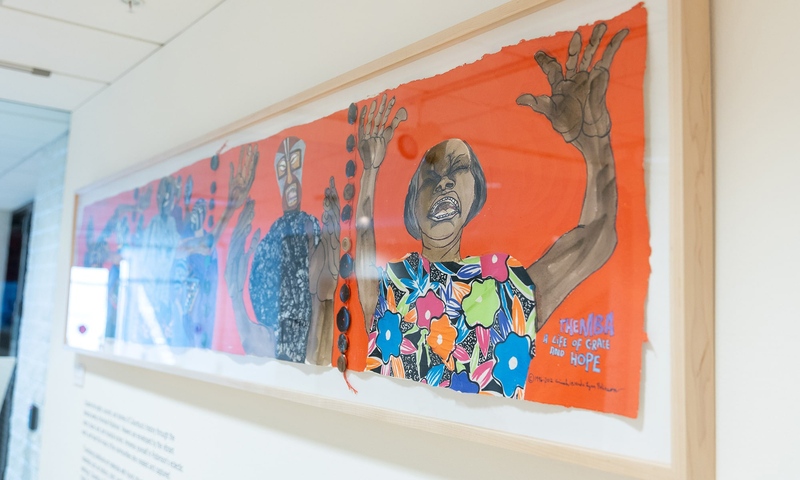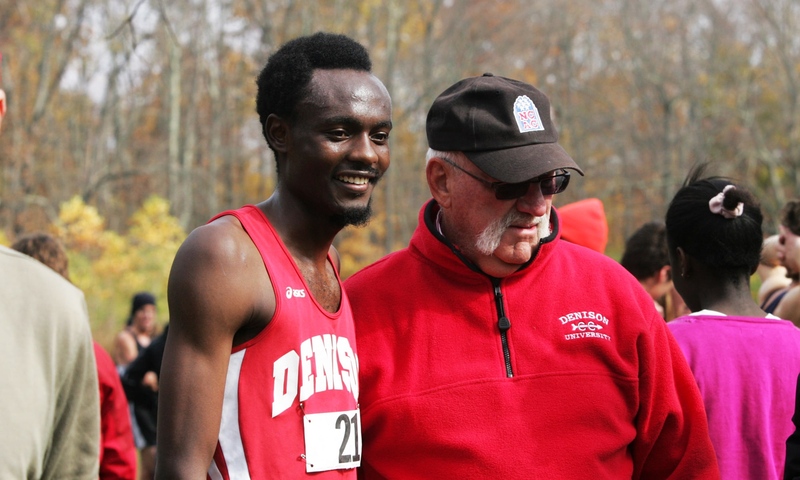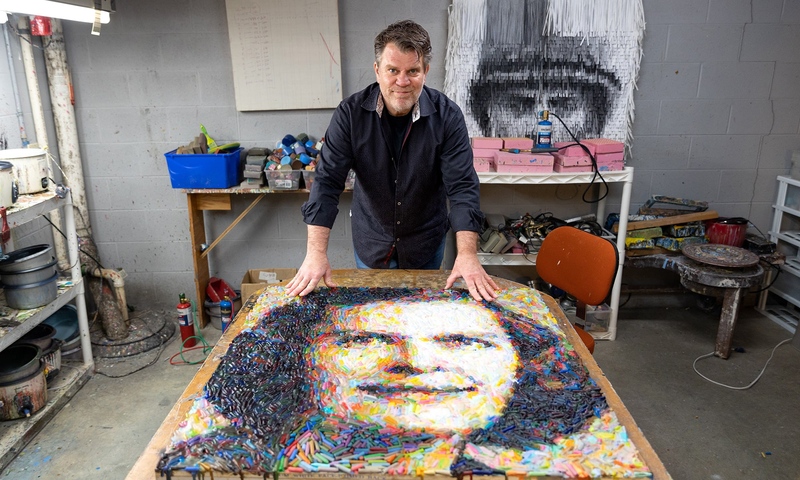Learning to build trust in yourself and in your body can be a key component in healing from an injury or illness. Breaking down barriers and building trust is what Alison Waldman ’10 does every day as a movement artist and wellness educator.
Her business, Available Wellness, provides these services to hospitals and clinics in the Washington, D.C. area. In addition to teaching yoga and guided meditation, Waldman creates site-specific dance performances in hospitals.
“What makes our dance at the hospital work is relationship-building. It’s not a one-off. I am a familiar face, wearing my hospital badge, being greeted by trusted staff as I dance my way through the unit,” she says. “Building in that exchange of trust is an essential part of how our dance is designed.”
Waldman, a communication major and dance minor, visited Denison virtually to participate in a discussion with students for the Career Fast Tracks program, which brings alumni together with students to discuss potential career paths. Afterward, she shared some insight into her work.
How did you develop this concept?
The original seed idea of putting a dance inside the hospital was the brainchild of my former hospital artist colleague — who is purely by coincidence also a Denison alum — Dance major Ilana Silverstein ’02.
As experienced site-specific performers and improvisers, we used our understanding of space — and the core of site-specific performance which is bringing the dance to the people instead of asking people to come to us — to our understanding of the hospital.
Our debut Day of Dance in October 2017 took six months of careful planning — communicating with hospital administrators, building a trusted cast, creating a route that was safe and effective, collaborating with our musician, and meticulous logistics of trying to build a cohesive work in an unpredictable environment.
All of this was done with our mission to ensure this dance served the hospital as a whole. To do this we had to think deeply about who could be at the hospital at any given moment and why. This helped us create a dance that belongs in that space, and that hospital space only.
Can you tell us more about your work in hospitals?
At the Arts & Humanities Program, my fellow artists (dancers, musicians, writers, quilters, knitters, etc.) and I are constantly examining the hospital spaces and interacting with the people inside seeing how we can build community through our modalities.
This dance is a small part of our overall work as artists with the hospital. The artistic team offers stretch breaks and yoga classes to the staff on a regular basis, the musicians play in units and hallways, and we have original programs for patients to engage with art as part of their hospital experience including our Movement for MS dance class and an expressive writing program.
How did you draw on your Denison background?
One of the biggest sweet spots of my work as an artist in hospital (and other unexpected) spaces is that it is deeply interdisciplinary. The fact that I can be an expert in my lane while able to have conversations and engagements across industries has a strong liberal arts foundation. Cross-sector leadership and design are the future for innovation and I’m prepared to be the chameleon.
Sandy Mathern-Smith and Gill Wright Miller ’74 in the Dance Department introduced me to site-specific dance and breaking the fourth wall when it comes to dance. They taught me that we shouldn’t be afraid to put dance in places where people may think it doesn’t belong. (I still remember the first time we took our dance class outside onto the main quad. We got some weird looks, and I loved it.)
I also have to give a shout out to Dr. Amanda Gunn, my senior advisor in the Communication department. She encouraged me to apply my love of movement to my curiosities of interpersonal communication, and how to understand my strengths and challenges as a woman trying to make a difference in a man’s world. That awareness and questioning (Who is in the room? Who is not and should be? How can I connect with them?) stick with me.
Why do you think the arts are important today?
If the pandemic has taught us anything, it’s that when all of the excess of life gets stripped away we crave community and creativity.
What was one of the first things people did around the world to cope with isolation? They played music and sang operas from their balconies. TikTok dances became a sensation. People begged their favorite bands and artists to do live shows and collaborations so they can find a sense of community. This shows that arts have never happened in a vacuum — we need them to come together and remember our shared humanity.
Anything else you’d like to say?
Though making dances and offering other in-person movement experiences for patients and staff is out of the question right now because of the pandemic, we haven’t stopped our work. One of the biggest things I’ve learned from the pandemic is that the ability to be flexible and creative in moments of challenge is a skill that artists hone their entire lives.
That skill set has allowed my fellow movement artists and me to respond to the needs of the hospital and greater community — and they’ve responded with delight, gratitude, and a thirst for creating.
With the resources and respect we deserve, artists can cross lines that medical professionals sometimes don’t have the space to do. We can help people stay connected to their joy and reasons to stay healthy and show them that their creative voice matters. That, at its core, is wellness. In times like this, democratizing that experience is the most important thing we can do.
